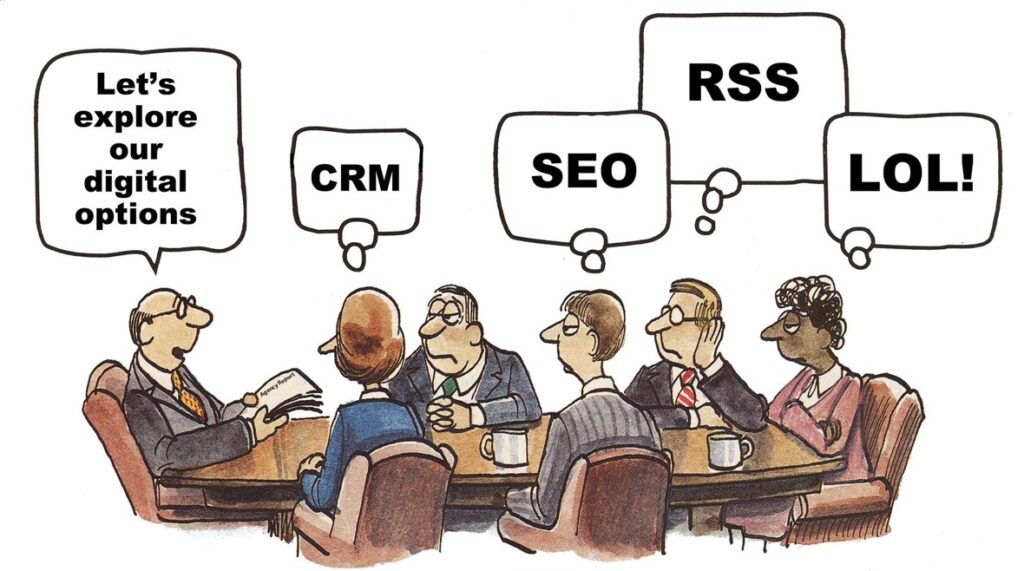YOUR MEETINGS ARE NOT AS EFFECTIVE AS YOU THINK
Meetings, when run efficiently, can bring together ideas and opinions and allow people to execute on the job in a more coordinated and cooperative manner. Efficient meetings help individuals form a coherent unit that is more adaptive, resilient, and agile especially during a time of crisis.
If there are no meetings in the places where we work, our attachment to the organizations we work for will disintegrate over time. Perhaps most important, meetings help establish and promote consensus, thus serving as a pivotal point for shared motivations and purpose.
Having said that, there are times when a meeting is not required. For instance, a lot more can be resolved by simply sending an email, a WhatsApp message, a phone call, or a simple conversation between a few people. An organisation may even get results faster by speaking to a group of people individually than a half-hour meeting with them all together.
Does your team meet a bit too often? Are conversations dominated by a few people? Do the conversations tend to lose focus? Is the environment such that participants rarely engage with the content of the agenda and the ideas with critical thinking? Are you, the leader the one doing a majority of the talking? These are the signs that your meetings are not as effective as you think.
And it’s high time you admitted it. The first step is to solicit feedback and seek opportunities to improve.
REGULAR FEEDBACKS
It starts with being self-aware. Otherwise, as a leader, you will just be living in a bubble. So for example, if after a survey, the verdict is that the meeting isn’t as effective and the general mood is that of a “time drag”, you as the leader may want to look inwards. If keeping to time isn’t exactly a strength, you may want to appoint and empower one or two executives to be ruthless timekeepers for the meeting without repercussions. Feedback should shed insights on what the leader does well and not so well in meetings.
Pay attention to those instances I mentioned earlier. Like what made the team’s faces or mood light up? Who did most of the talking? Were people distracted most of the time? Conducting side conversations or browsing on their phones? Did the discussion stray to irrelevant topics? Does it have anything to do with the timing? Were all the opinions and ideas that were expressed alike? The power of questions is immense. It’s also important to take note of the positives as well like full engagement, robust and healthy debates. What could you do differently in future meetings to encourage that kind of outcome?
During your next virtual meeting, can you after the meeting is over, stay logged on and see how many executives remained online and for how long? If it is a significant number and it took them a while to log out, then it means they were almost not engaged or were busy doing other things. That is one piece of feedback.
It is also imperative you regularly check in on people that attend the meetings. You can do this face-to-face or use indirect means like emails, google forms which help with anonymous feedbacks as direct reports or colleagues may not want to hurt your feelings. If you are going down the route of a survey, ensure it covers what to initiate, what to tweak, and also ask for further suggestions from the team.
These exercises should help identify your key strengths and weaknesses, and what you could do differently.
THE AGENDA
The agenda is by far the most important piece of information before the meeting starts. A properly drawn up agenda clarifies the purpose and speeds up the pace of the meeting. when you are a steward of other people’s time, you owe it to them to make some modest upfront investment. The agenda if followed to the letter can reduce significantly irrelevant items popping up during the meeting, overly long durations, and lack of focus. One tactic that has worked tremendously well for me during meetings is Steven G. Rogelberg’s suggestions in his work “How to Create the Perfect Meeting Agenda,”. Turning bullet points into questions can drive to the outcomes you’re looking for.
For example, instead of a general topic like “Budget Review,” try a specific question like, “How will we reduce our spending by 35% before the end of the financial year?” Or replace an item like “Strategic Planning” with a challenge like, “What do we continue doing, discontinue and do differently to regain market leadership?” Not only will this approach help determine who should be at the meeting, but it will also help with focus, engagement, and better output.
If you do not have a clear mission or a list of agenda items, then maybe that meeting should not happen. Send an email or pick up your phone instead.

AVOID ONE SIZE FITS ALL APPROACH
In terms of preparing and facilitating a meeting, you will need to adapt your style depending on the size of the meeting. Anthony Jay suggested for an assembly (100 or more people), the format should be the main speaker or speakers with the majority doing the listening. This is ideal when a decision has been reached, and what is left is the dissemination of information at scale.
For a council (40 or 50 people), the format should be the main speaker or speakers leading the meeting, with the majority listening in but can come with questions, comments, and suggestions.
And lastly, the committee—(about 10 to 12 people), all of whom more or less speak on an equal footing under the guidance and control of a chairman.
It is important to get the approach right to avoid a cacophony of voices, social loafing (people drawing back under the guise of a crowd)meeting times exceeding their allocated times, or disgruntled and grousing executives.
PREPARE AHEAD OF TIME
Sounds cliché but it often happens when leaders show up at meetings unprepared, especially for meetings that happen frequently. Firstly, it does not speak well of your leadership, and secondly, you are taking for granted people’s time, arguably one of the most valuable assets in today’s world. That’s when executives spend time during the meeting to get other tasks done. Others are daydreaming or a dip in attendance starts, assuming the meeting is not mandatory.
Leaders should identify the objective of the meeting, get stakeholders involved as much as they can in the agenda items. That way, people take ownership and are better engaged during the meetings. If it is a committee type of meeting, ensure those not included in the meeting are carried along, or invited to share ideas. And the proper thing is to keep them in the loop regarding any decisions reached later.
CREATE PSYCHOLOGICAL SAFETY
Teams are better engaged and more invested when they feel they can raise questions, concerns, and ideas without fear of repercussion. But this psychological safety can be hard to create especially in virtual meetings, where detecting nonverbal social cues can be tough and distractions are everywhere. Children demanding attention or the doorbell ringing during meetings for those walking from home for example.
Several people see meetings as “a waste of my time” or a regular ritual taking them away from their “real work.” They also think their opinions do not matter anyway, so out of respect, they just show up, daydreaming about their next vacation. But leaders can put into good use videoconferencing tools like the chat function which gives everyone on the team an opportunity to be heard. Leaders must encourage attendees to use the chat function if they’re more comfortable contributing nonverbally or reticent to contribute.
The essence of this article is not to discourage meetings, but to eliminate the unnecessary ones and improve upon the necessary ones.
To get this done, leaders need to understand what they do well and not so well in meetings. They can get this via feedbacks, a succinct “straight to the point” agenda, and adapting the strategy based on the attendee size. Leaders must also prepare well ahead for the meeting, and ensuring every participant feels welcome.



